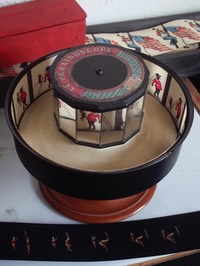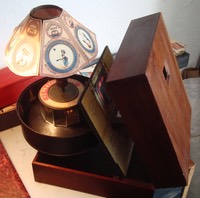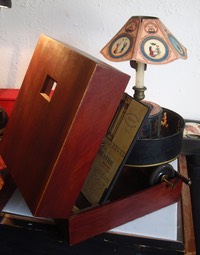The Praxinoscope
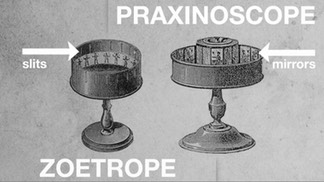
The praxinoscope was invented in 1877 by Frenchman Charles Reynaud
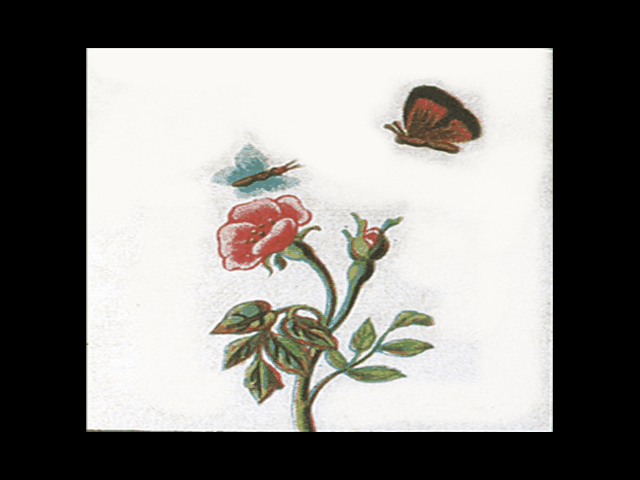
It was the first device to overcome picture distortion caused by viewing through moving slots – the image is far sharper than with the zoetrope – or any other previous devices and it soon replaced the zoetrope in public popularity. '
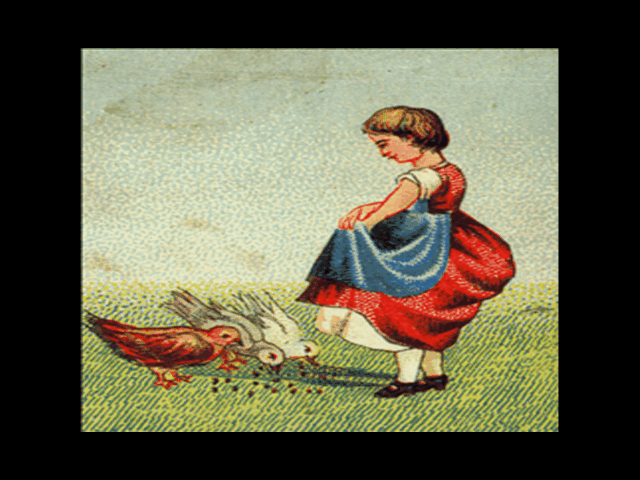
It works quite simply – a band of pictures placed inside a shallow outer cylinder. Each picture is reflected by the inner set of mirrors. There is one mirror for each image, and the pictures are reflected into the mirrors when the outer cylinder rotates. The fast succession of reflected images gives the illusion of a moving picture.
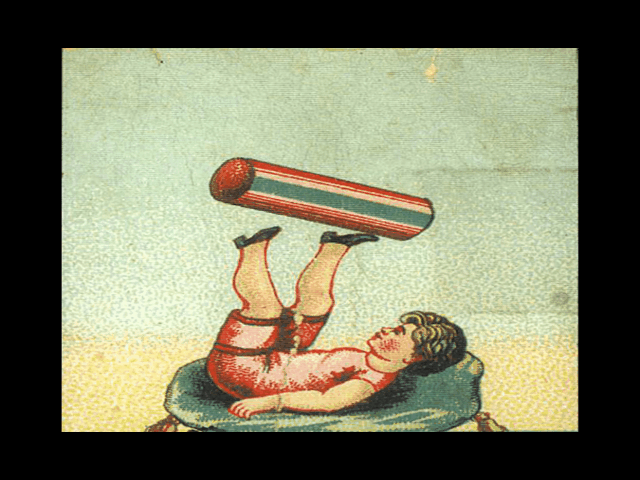
Using this principle, Reynard soon found a way to project the moving pictures onto a screen – he called this advance “Theatre Optique”.
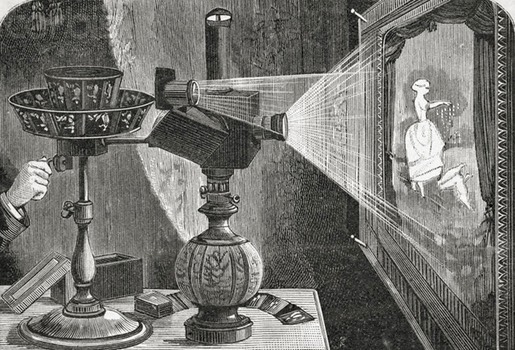
Popular Science--A curious adaptation of the praxinoscope, invented by M. Reynaud. --- Image by © Corbis
A standard praxinoscope can only show a second or so of animation, because of the limited number of pictures the strip contains. Usually 12 or 13.
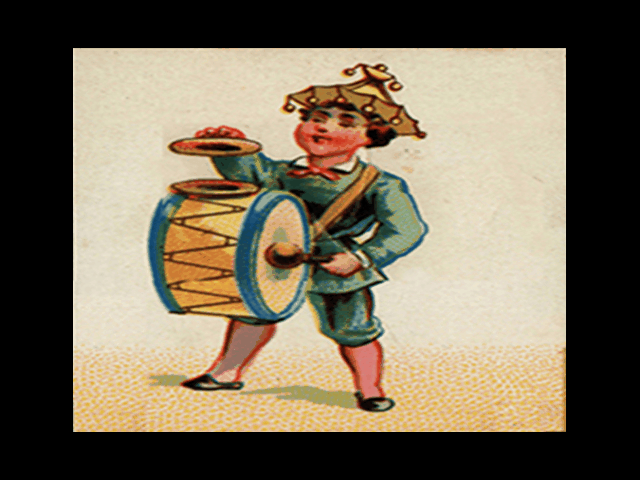
Theatre Optique used a long roll of paper to increase the number of pictures, and was able to create a much longer show for an audience.
